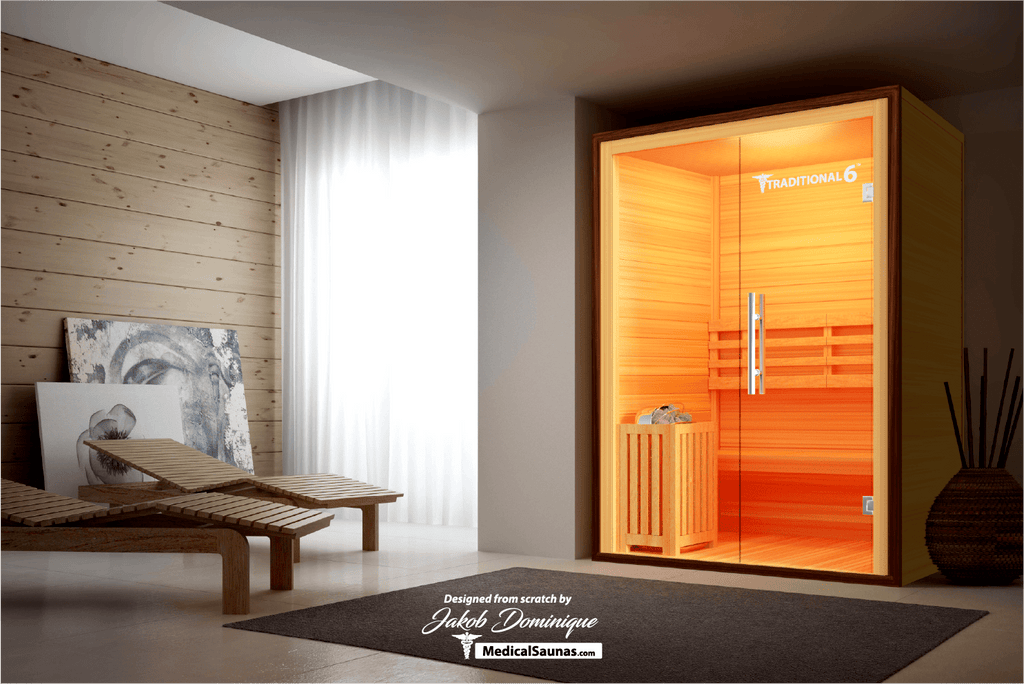Things about Traditional Sauna
Things about Traditional Sauna
Blog Article
The smart Trick of Traditional Sauna That Nobody is Discussing
Table of ContentsSome Known Questions About Traditional Sauna.An Unbiased View of Traditional SaunaThe 8-Second Trick For Traditional Sauna4 Easy Facts About Traditional Sauna Described
Most of the weight lost in a sauna is water loss and is re-gained upon rehydrating. Without a question sauna can be an important part of a healthy weight loss program. To check out the distinctions between conventional and IR saunas, I will divide these into verifiable, academic, and made differences.Thus, the best factor in the saunawhich goes to the ceiling straight over the sauna heateris commonly in between 185 and 190 F. Traditional Sauna. Claims that a typical sauna exceeds 200 F is simply not real and not relevant for electric saunas sold in the US. The temperature level for a far-infrared sauna is usually established between 120 and 140 F; nevertheless, unlike the conventional sauna, the goal in and IR space is not to achieve a heat
As a result of this, the temperature level distinction is nearly unimportant, since excessive sweating results in both sauna types, but the method of heating up the body is various. In an IR sauna the bather will certainly really feel warm and will certainly sweat a lot, yet at much lower temperature levels. Therefore, if the objective is to spend longer amount of times in the sauna, the IR sauna is an excellent option.

Top Guidelines Of Traditional Sauna
When the heat is attained, the components cycle on and off to maintain the heat. The majority of standard sauna individuals appreciate putting water over the rocks to create heavy steam to increase sauna humidity levels. The benefits of pouring water over the rocks include: making the room much more comfortable, moistening the nasal passages, and enabling the usage of aromatherapy by mixing crucial oils with the water.
In a far-infrared sauna, the warm waves permeate the body to successfully heat up the body and increase the body core temperature level. To accomplish this boosted temperature level, Far-infrared emitters create infrared energy which is close to the same wavelength as that which the body normally emitsoften described as the "Vital Variety" of 7 to 14 microns), so the power is well received by the body.
When the energy goes into the body, it triggers the body temperature to increase and ultimately leads to perspiration. In an infrared sauna it is essential for the emitters/heaters to continue to be on virtually regularly. Since there is no mass of rocks to keep warm, the sauna will cool down if the emitters turned off.
As pointed out over, the sauna bather in an infrared space wishes to place himself in front of operating emitters to get optimal gain from the warmth. The heating time for both rooms can be extremely various, depending upon just how the spaces are used. For a typical sauna, a bather must permit 30-40 minutes for the room to achieve a wanted temperature level and to effectively pre-heat the rocks.
Traditional Sauna - An Overview
A well constructed sauna will commonly achieve a temperature level of 150-160 F in about 30-40 minutes (Traditional Sauna). For hotter temperatures, the area may need to warmth for a longer period. As soon as the room accomplishes established temperature level, the heating system will certainly cycle on and off, typically operating regarding 50% of the time. The shielded wall surfaces and the heated rocks will maintain the area hot and at steady temperature levels.
To some, 15 their explanation mins was "wasted" while the infrared power warmed the wood panels rather than heating a body, while others find a pre-heated space to be a lot more comfy and believe a raised beginning temperature level is essential to begin sweating. The size of advised usage for every space is roughly the same (10-15 mins per session); however, due to the reduced air temperature levels and the capacity to really feel the results of infrared heat much faster than a traditional sauna, it is not uncommon for a person to spend a total of 20-30 mins in an infrared sauna.
Traditional saunas have a read what he said tendency to be larger (hence use even more electrical power) than infrared saunas, although conventional saunas are certainly available in one and 2 individual dimensions. For a two-person standard sauna, 5x6 or 5x7 size is most popular. The leading bench can pleasantly seat two or three people and is likewise enough time to relax during the sauna session.


The typical cost per kWH of power in the U.S. is roughly $0.11, so a 4.5 kW heater will certainly cost around $.50 to run for one hour, if the heating unit runs continually for one hour. Normally a sauna heater will certainly run for 75% of the initial hour and 50% of subsequent hours on given that the elements cycle once the set temperature level is achieved.
The Basic Principles Of Traditional Sauna
A two person far-infrared area is typically literally smaller sized than a conventional sauna, commonly concerning click here for info 4' x 4' or smaller. The IR heating system is commonly 1.5-1.7 kW using a 120 volt 15 amp plug-in service. Considering that the area can be made use of quicker than a sauna space, we will certainly think the area is used for to of an hour including warm up time.
Lastly, there is a rarely reviewed distinction in the social experience in between the 2 rooms. While our culture has shed several of the social advantage of the traditional sauna experience, it can be really socially satisfying. From household time in the sauna, to heart-felt conversations with better halves, to sauna partiesthe typical sauna experience can bring about intimate mingling.
Most greater end infrared areas include colored light treatment, noise systems and full-glass fronts.
Report this page